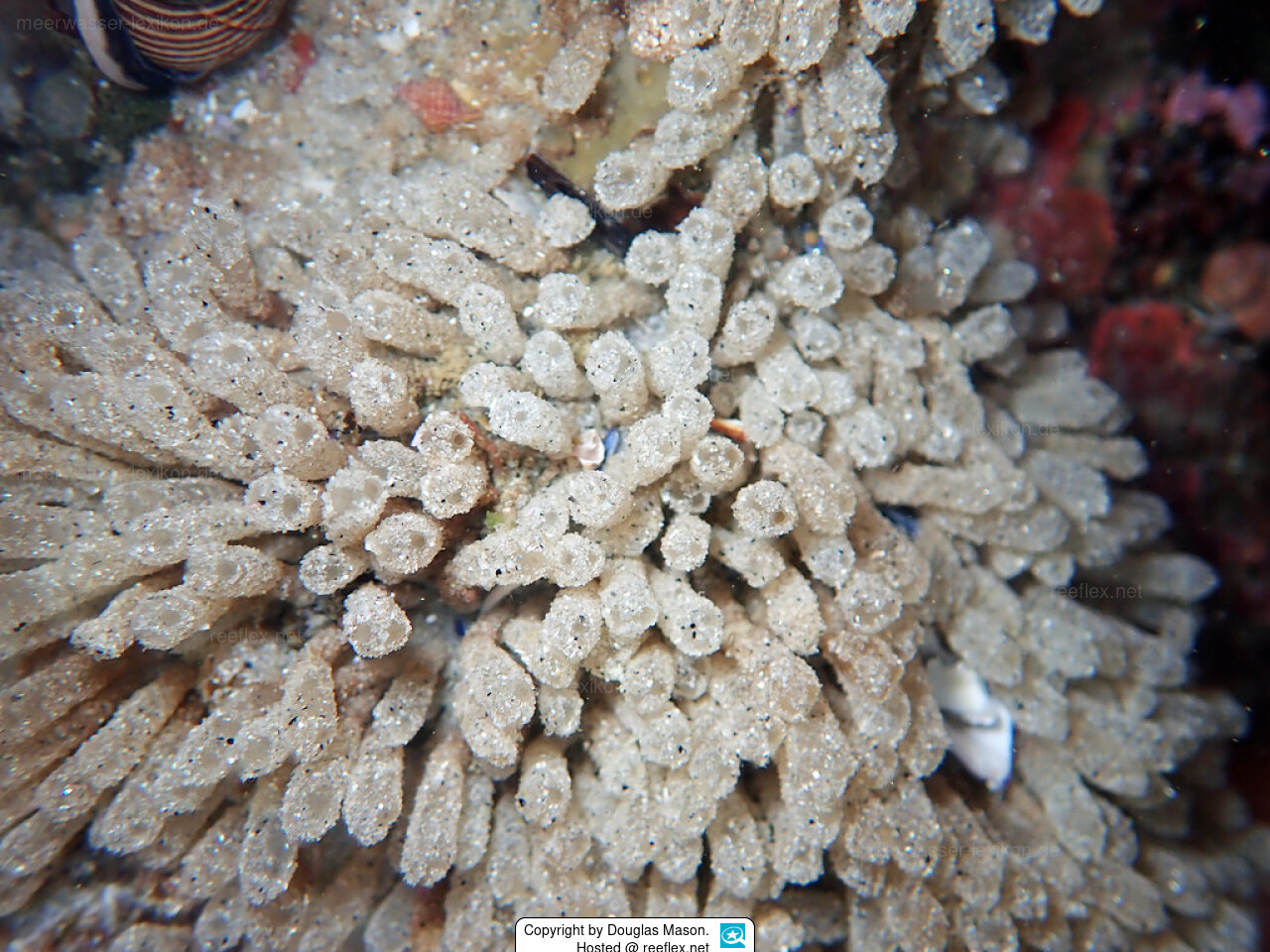Info
Euherdmania claviformis (Ritter, 1903)
Euherdmania claviformis is the type specimen for describing the genus Euherdmania. Ritter (1903) described this species in great detail and was so impressed by its difference from all other known colonial sea squirts that he established a new family and genus for it. While Ritter himself had to change the family and genus names due to their special nature (Ritter 1904), this genus is still considered unusual and contains only a few species.
The individual zooids of the colonial sea squirt are 2-6 cm long and have a diameter of 2-3 mm. The zooids are club-shaped, colorless and translucent. However, they are often encrusted with sand, so the appearance differs from the description.
They form clumps of long, thin, colorless zooids that are usually almost entirely encrusted and embedded in gray sand. Each zooid is separate except for the common base, which consists of closely interwoven, branching basal processes. Sometimes the front individual tubes are free of sand.
The sea squirts are moderately common in their distribution area. They are inconspicuous and form dense, low-lying groups mixed with other sessile invertebrates or grow in scattered groups among surfgrass roots; low intertidal and intertidal zone on rocks.
Similar species: Clavelina huntsmani zooids are larger and more transparent with pink internal organs clearly visible through the tunic.
Synonymised names
Herdmania claviformis Ritter, 1903 · unaccepted (original combination)
Euherdmania claviformis is the type specimen for describing the genus Euherdmania. Ritter (1903) described this species in great detail and was so impressed by its difference from all other known colonial sea squirts that he established a new family and genus for it. While Ritter himself had to change the family and genus names due to their special nature (Ritter 1904), this genus is still considered unusual and contains only a few species.
The individual zooids of the colonial sea squirt are 2-6 cm long and have a diameter of 2-3 mm. The zooids are club-shaped, colorless and translucent. However, they are often encrusted with sand, so the appearance differs from the description.
They form clumps of long, thin, colorless zooids that are usually almost entirely encrusted and embedded in gray sand. Each zooid is separate except for the common base, which consists of closely interwoven, branching basal processes. Sometimes the front individual tubes are free of sand.
The sea squirts are moderately common in their distribution area. They are inconspicuous and form dense, low-lying groups mixed with other sessile invertebrates or grow in scattered groups among surfgrass roots; low intertidal and intertidal zone on rocks.
Similar species: Clavelina huntsmani zooids are larger and more transparent with pink internal organs clearly visible through the tunic.
Synonymised names
Herdmania claviformis Ritter, 1903 · unaccepted (original combination)







 Douglas Mason, USA
Douglas Mason, USA

